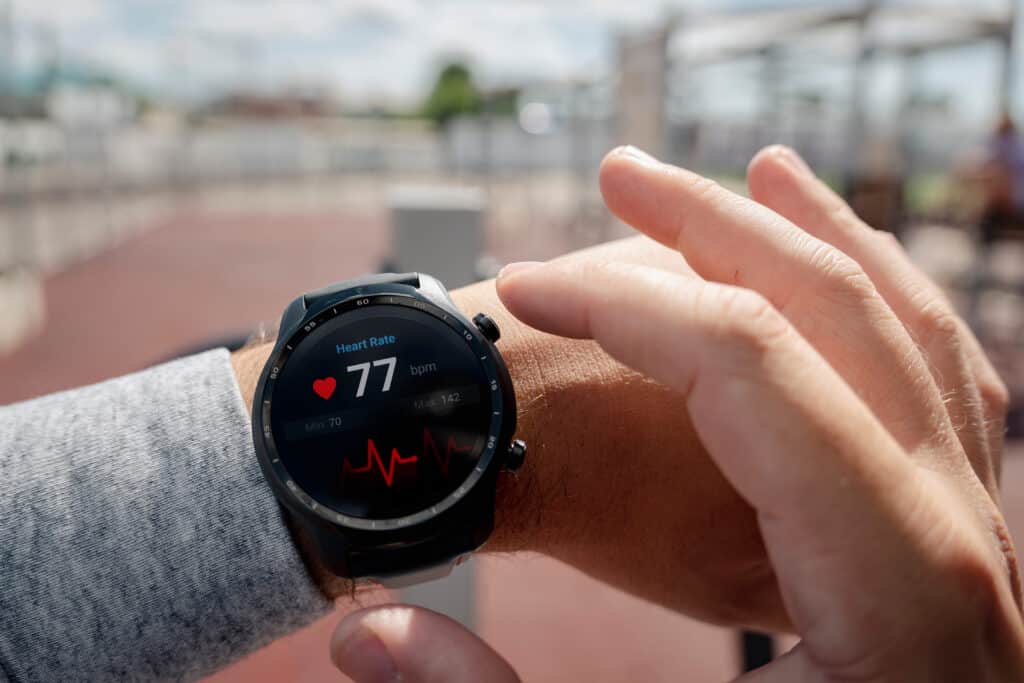Navigating the Evolving Landscape of Health and Wellness in 2024
Welcome to our exploration of the health and wellness landscape as it unfolds in 2024. The realm of health and wellness is in a constant state of evolution, shaped by emerging research, technological advancements, and shifting societal values. As we delve into this dynamic world, it’s crucial for certified personal trainers, health and wellness coaches, and nutrition coaches to understand that staying abreast of these trends is not merely about keeping pace with what’s popular. Rather, it’s about recognizing how these trends reflect the latest research and embody best practices in health and wellness.
In this article, we aim to provide a comprehensive overview of the most promising and impactful trends in health and wellness for 2024. Our focus is not on fleeting fads but on trends with the potential for sustainable, long-term benefits. These trends have been carefully selected for their alignment with current research and their capacity to positively influence health and wellness practices.
From the integration of technology in personal health management to the growing emphasis on mental well-being and community-driven wellness, each trend we explore is a piece of the larger puzzle of holistic health. We believe that understanding these trends is essential for anyone looking to enhance their well-being or guide others in their health journeys. By embracing these trends, we can make informed choices that benefit us today and pave the way for a healthier future.
Join us as we navigate the exciting and ever-changing landscape of health and wellness in 2024, where innovation meets tradition, and where each step forward is guided by the latest in scientific research and best practices.

Learn How to Set Yourself Apart as a Board-Certified Health Coach

Hobby-Based Movement: Enhancing Health Through Enjoyable Activities
Hobby-based physical activities encompass a range of enjoyable and engaging pursuits that contribute to physical fitness and overall health. These activities are often pursued for pleasure and relaxation, rather than solely for exercise or competition. The rise in popularity of such activities can be attributed to a growing awareness of their holistic health benefits and a shift toward more enjoyable forms of physical activity.
Examples of Hobby-Based Movement
- Dance: Dance, as both a sport and a hobby, has gained popularity in recent years. It offers a therapeutic factor, providing an outlet for emotions and contributing to general well-being. A study titled “Dancing Through the Pain: Dance as a Psychotherapeutic Outlet” highlights that 80% of participants used dance for mental health benefits, and 65% used it as an outlet for emotions.
- Hiking: Hiking in parks and recreation areas has been linked to higher levels of physical activity. A study examining individuals who engage in physical activity in parks found a significant correlation between the frequency of visits to these areas and higher physical activity levels, suggesting that hiking can effectively contribute to physical fitness.
- Gardening: Gardening is recognized as an everyday activity that contributes to physical health. It is a form of active recreation that can reduce the risk of developing heart disease, stroke, high blood pressure, and some cancers, while also helping in weight control and stress management.
Benefits of Hobby-Based Movement for Physical and Mental Health
Hobby-based physical activities like dance, hiking, and gardening offer numerous health benefits. They not only help in maintaining physical fitness but also play a crucial role in mental health. Engaging in these activities can alleviate symptoms of depression and improve the quality of life. For instance, the “Exercise Intervention” paper discusses how exercise and physical activity, including hobby-based activities, can be a low-cost alternative to traditional treatments for depression, enhancing positive emotions and overall well-being.
In summary, hobby-based physical activities such as dance, hiking, and gardening are not only enjoyable but also significantly contribute to both physical and mental health. Their rising popularity underscores a broader understanding of health and wellness, emphasizing the importance of engaging in activities that are both beneficial and enjoyable.

Meditation Apps: Harnessing Technology for Mindfulness and Stress Reduction
The proliferation of meditation and mindfulness apps reflects a growing societal interest in accessible, technology-based solutions for enhancing mental wellness. These apps have become popular self-help tools, offering a convenient way for individuals to engage in mindfulness practices, which have been traditionally associated with stress reduction and improved mental health.
How Technology Can Aid in Stress Reduction and Mental Wellness
Meditation apps have shown promising results in decreasing stress levels among users. A study titled “Do Mindfulness Meditation Apps Decrease Stress in College Students?” found that consistent use of mindfulness meditation apps significantly reduced self-reported stress levels in college students. This suggests that regular engagement with these apps can be an effective tool for managing stress.
Another study, “Managing Emotions: The Effects of Online Mindfulness Meditation on Mental Health and Economic Behavior”, demonstrated that access to a mindfulness meditation app led to a substantial reduction in symptoms of stress, anxiety, and depression. This indicates the potential of these apps to positively impact mental health and even influence economic decisions by improving focus and productivity.
Popular Mindfulness Apps and Their Unique Features
- Headspace: Known for its user-friendly interface and diverse range of guided meditations, Headspace caters to both beginners and experienced practitioners. It offers sessions on stress management, sleep, and focus.
- Calm: Calm stands out for its variety of mindfulness exercises, sleep stories, and breathing techniques. It’s particularly noted for its effectiveness in improving sleep quality and reducing anxiety.
- Insight Timer: This app offers a vast library of free meditations and is favored for its community features, allowing users to connect with others and share experiences.
- 10% Happier: Targeted at skeptics, this app combines practical meditation techniques with a no-nonsense approach, focusing on tangible benefits and personal improvement.
In summary, meditation and mindfulness apps are a growing trend in the health and wellness sector, offering accessible and effective tools for stress reduction and mental wellness. Their unique features cater to a wide range of preferences, making mindfulness practice more inclusive and adaptable to modern lifestyles.

Probiotics and Prebiotics in Gut Health: A Key to Overall Wellness
Probiotics are live microorganisms, often referred to as “good” or “friendly” bacteria, that provide health benefits when consumed in adequate amounts. They are found in various foods and supplements and are known for their role in promoting a healthy digestive system. Prebiotics, on the other hand, are types of dietary fiber that feed the friendly bacteria in the gut. They help in the growth and activity of beneficial gut microbes, thus supporting gut health.
Connection Between Gut Health and Overall Wellness
The gut microbiota plays a crucial role in overall health, influencing everything from digestion to immune function. A healthy gut microbiome is essential for proper nutrient absorption, immune system function, and even mental health. Research has shown that imbalances in gut bacteria can lead to a range of health issues, including digestive disorders, obesity, and mental health conditions.
A review titled “Co-Encapsulated Synbiotics and Immobilized Probiotics in Human Health and Gut Microbiota Modulation” discusses the importance of maintaining a healthy gut microbiota for overall well-being. It emphasizes the health benefits mediated by synbiotics (a combination of probiotics and prebiotics) and their role in modulating gut health.
Recent Advancements in Gut Health and Popular Supplements
Recent advancements in gut health research have led to the development of innovative functional products containing synbiotics. These include nutrient bars, yogurt, and other food products designed to ensure the daily intake of probiotics and prebiotics. These advancements aim to provide stable and effective synbiotic formulations tailored for different age groups or specific health needs.
In addition to food products, popular probiotic and prebiotic supplements are widely available. These supplements are formulated to support gut health and are often targeted toward specific health concerns, such as improving digestion, boosting immunity, or enhancing nutrient absorption.
Ultimately, probiotics and prebiotics play a vital role in maintaining gut health and, by extension, overall wellness. The growing interest in gut microbiota modulation through diet and supplements underscores the importance of gut health in the broader context of physical and mental well-being.
Learn how you can become a gut health specialist online in less than 6 months with AFPA’s specialization course.

Expanded Use of Health Wearables: Revolutionizing Personal Health Management
The integration of artificial intelligence (AI) with wearable technology has significantly transformed personalized health monitoring. Wearable devices, ranging from basic fitness trackers to advanced health management tools, now offer real-time data and personalized recommendations, enhancing healthcare outcomes and reshaping patient empowerment. A study titled “Impact of AI in Personalised Health Monitoring Using Wearable Devices” explores this transformative impact, highlighting users’ positive health outcomes and trust in AI-generated insights.
Examples of Wearable Technology
- Fitness Trackers: These devices track physical activities like steps taken, distance traveled, and calories burned. They often include heart rate monitors and sleep tracking features, providing a comprehensive overview of one’s daily health and fitness.
- Smartwatches: Smartwatches have become powerful tools for health monitoring, offering features like heart rate monitoring, activity tracking, sleep analysis, stress monitoring, and even advanced functions like electrocardiogram (ECG) and blood pressure monitoring. The study “Smart wearable devices for real-time health monitoring” discusses the benefits of smartwatches in providing real-time health data, crucial for identifying health irregularities and assessing overall well-being.
Impact of Wearable Technology on Personal Health Management
Wearable health devices have revolutionized personal health management by enabling continuous monitoring of various physiological signs and activities. They have become particularly important in remote healthcare monitoring, offering an efficient and cost-effective alternative to traditional on-site clinical monitoring. The study “Future of Wearable Health Devices: Smartwatches VS Smart Headphones” highlights the rapid growth of the wearable medical devices market, driven by increasing focus on health management systems and daily health tracking.
The expanded use of health wearables has brought a new dimension to personal health management. These devices not only provide valuable health insights but also empower individuals to take a more active role in managing their health and well-being.
Tech-Enhanced Sleep Solutions
Quality sleep is essential for maintaining good health and well-being throughout life. Getting enough quality sleep at the right times can help protect mental health, physical health, quality of life, and safety. The way you feel while you’re awake depends in part on what happens while you’re sleeping.
Innovations in Sleep Technology
- Wearable Devices and Sleep-Tracking Apps: Wearable devices and sleep-tracking apps have become popular tools for monitoring and improving sleep habits. These technologies use sensors to track parameters like sleep onset, duration, and nighttime awakenings. A mini-review titled “Tracking Sleep: The Impact of Wearable Devices and Sleep Apps on Sleep Health” discusses the potential of these devices to significantly improve sleep quality, despite current limitations such as inaccuracies and reliance on user reporting.
- Smart Wearable System for Sleep Tracking: The development of smart wearable systems using a multi-sensor approach and machine learning techniques, like Support Vector Machine (SVM), has been explored for sleep tracking. These systems aim to provide affordable, portable, and user-friendly solutions for monitoring vital signals affecting sleep quality. The study “Design of Smart Wearable System for Sleep Tracking Using SVM and Multi-Sensor Approach” highlights advancements in this area, showing promising results in sleep quality and sleep stages accuracy.
How Technology Is Transforming Sleep Habits
The integration of technology in sleep monitoring has transformed sleep habits by providing individuals with detailed insights into their sleep patterns. This information empowers users to make informed decisions about their sleep routines and identify areas for improvement. The study “Internet of things for sleep tracking: wearables vs. nonwearables” compares wearable and non-wearable technologies, indicating a trend toward more personalized and convenient methods of sleep tracking.
In summary, technological advancements in sleep monitoring, such as wearable devices, smart systems, and apps are playing a pivotal role in enhancing sleep quality. These innovations offer personalized insights and practical solutions, contributing to better sleep hygiene and overall health.

Personalized Nutrition: Tailoring Diet to Individual Needs
Personalized nutrition represents a paradigm shift in dietary planning and nutrition management. It involves creating individualized diet plans based on a person’s genetic makeup, lifestyle, and health goals. This approach recognizes that the one-size-fits-all model of nutrition is insufficient, as dietary needs vary greatly among individuals due to differences in genetics, metabolism, body composition, and lifestyle factors.
Impact of Personalized Nutrition on the Health and Wellness Industry
The emergence of personalized nutrition has had a profound impact on the health and wellness industry. It has led to the development of new services and products that cater to the unique nutritional needs of individuals. This trend is driven by increasing consumer awareness and demand for more tailored health and wellness solutions. Personalized nutrition is not only changing how people approach their diets but also how companies develop and market food products and nutritional supplements.
Examples of Personalized Nutrition Services
- DNA-Based Diet Plans: These services analyze an individual’s genetic profile to provide dietary recommendations tailored to their genetic predispositions. This can include advice on nutrient requirements, food sensitivities, and metabolic health.
- Digital Nutrition Platforms: Online platforms and mobile apps offer personalized diet plans based on user input regarding their health goals, dietary preferences, and lifestyle habits. These platforms often use algorithms to generate customized meal plans and shopping lists.
- Nutrition Counseling Services: Registered dietitians and certified nutritionists who have graduated from an accredited nutrition course can offer personalized nutrition counseling, taking into account an individual’s health history, dietary preferences, and specific health goals. This service often includes ongoing support and adjustments to the diet plan as needed.
In summary, personalized nutrition is revolutionizing the health and wellness industry by providing more targeted and effective dietary solutions. This approach acknowledges the unique nutritional needs of individuals, offering a more scientific and tailored approach to diet and health.

Virtual Reality Fitness: A New Dimension in Exercise Regimes
Virtual Reality (VR) has recently been incorporated into fitness regimes, offering a novel and immersive way to exercise. By simulating different environments and activities, VR fitness programs provide a unique combination of entertainment and physical activity. This innovative approach to fitness leverages the engaging and interactive nature of VR to motivate users and enhance their workout experience.
Benefits of Immersive Fitness Experiences
Immersive VR fitness experiences offer several benefits over traditional exercise methods:
- Enhanced Motivation: The immersive nature of VR can make exercise more enjoyable and engaging, helping to boost motivation and adherence to fitness routines.
- Variety and Accessibility: VR fitness programs can simulate a wide range of activities and environments, providing variety and making certain types of exercise more accessible to people who may not have the opportunity or ability to engage in them in real life.
- Psychological Benefits: VR fitness can also have psychological benefits, such as reducing stress and improving mood, as it often combines physical activity with elements of play and escapism.
Examples of VR Fitness Programs
In summary, the incorporation of VR into fitness regimes is transforming the way people exercise, offering immersive experiences that combine physical activity with the engaging and interactive nature of virtual environments. These VR fitness programs not only enhance motivation and enjoyment but also provide accessible and varied exercise options, contributing to both physical and mental well-being.

Mental Health Awareness: Emphasizing Mental Well-Being in the Digital Age
Increased Focus on Mental Health as a Key Component of Wellness
The recognition of mental health as a crucial aspect of overall wellness has gained significant momentum in recent years. This shift acknowledges that mental well-being is just as important as physical health, and it’s essential for a balanced and healthy life. The growing awareness around mental health issues has led to more open conversations, reduced stigma, and increased support for mental health initiatives.
Resources and Strategies for Mental Well-Being
Various resources and strategies have been developed to support mental well-being. These include:
- Online Therapy and Counseling: Digital platforms offering therapy and counseling services have made mental health support more accessible.
- Mindfulness and Meditation Apps: Apps focusing on mindfulness and meditation provide tools for stress reduction and emotional regulation.
- Educational Resources: Websites and online courses offer valuable information about mental health, helping individuals understand and manage their mental well-being.
Role of Social Media and Online Communities on Mental Health
Social media and online communities play a significant role in mental health awareness and support. They offer platforms for sharing experiences, finding community support, and accessing mental health resources. A study titled “Utilizing social media platforms to promote mental health awareness and help seeking in underserved communities during the COVID-19 pandemic” highlights the potential of social media in reaching wide audiences and promoting mental health awareness, especially in underserved populations.
Another study, “Social Media for Mental Health Initiatives”, explores the use of social media for mental health campaigns, discussing the benefits and challenges of these platforms in raising awareness and providing support.
Additionally, the study “A computational study of mental health awareness campaigns on social media.” provides insights into the nature of and engagement around mental health content shared on social media campaigns, emphasizing the importance of these platforms in mental health discourse.
In summary, the increased focus on mental health as a key component of wellness has led to the development of various resources and strategies to support mental well-being. The role of social media and online communities in this context is pivotal, offering platforms for awareness, support, and community building around mental health issues.

Eco-Conscious Wellness Practices: Merging Health with Sustainability
The integration of sustainability into health and wellness practices is a growing trend, reflecting a collective shift toward more environmentally conscious living. This movement recognizes the interconnectedness of personal health and environmental health, emphasizing the importance of adopting practices that are beneficial for both.
Examples of Eco-Conscious Wellness Practices
- Eco-Friendly Fitness Gear: The fitness industry is increasingly embracing sustainability by producing eco-friendly gear. This includes items made from recycled materials, biodegradable yoga mats, and apparel made from sustainable fabrics. These products cater to the environmentally conscious consumer who seeks to minimize their ecological footprint while maintaining an active lifestyle.
- Sustainable Diet Choices: Sustainable diets involve consuming foods that are not only healthy but also have a low environmental impact. This includes plant-based diets, locally sourced foods, and organic produce. Adopting a sustainable diet contributes to environmental conservation while also providing health benefits.
Impact of Eco-Conscious Wellness on the Environment and Personal Health
The shift toward eco-conscious wellness practices has a dual impact:
- Environmental Benefits: By choosing sustainable products and diets, individuals contribute to reducing pollution, conserving natural resources, and mitigating climate change. This shift supports biodiversity and promotes the health of the planet.
- Personal Health Benefits: Eco-conscious wellness practices often lead to healthier lifestyle choices. For example, a sustainable diet rich in plant-based foods can improve overall health, reduce the risk of chronic diseases, and enhance physical and mental well-being.
The trend of incorporating sustainability into health and wellness practices is a response to the growing awareness of environmental issues and their impact on personal health. By adopting eco-friendly fitness gear and sustainable diet choices, individuals can contribute to environmental conservation while also benefiting their own health. This holistic approach to wellness underscores the importance of living in harmony with the natural world.

The rise of community-based wellness initiatives reflects a growing recognition of the importance of social connections in promoting health and well-being. These initiatives often involve group activities and community engagement, focusing on holistic wellness that includes physical, mental, and social health aspects.
Benefits of Social Support in Health Journeys
Social support plays a crucial role in health and wellness journeys. It provides emotional encouragement, practical assistance, and a sense of belonging, all of which are vital for maintaining motivation and resilience in the face of health challenges. Community-based wellness activities leverage this social support to enhance the effectiveness of health interventions and improve overall well-being.
Going into 2024, community-based wellness initiatives are gaining popularity as they offer a supportive environment that fosters holistic health. These initiatives leverage the power of social support and community engagement to enhance health outcomes and promote overall well-being.
Main Takeaways
As we look toward 2024, the landscape of health and wellness is evolving with exciting and innovative trends. These developments promise not only to enhance our physical and mental well-being but also to bring us closer to a more sustainable, connected, and personalized approach to health.
- Hobby-Based Movement: The rise of engaging in physical activities as hobbies, such as dance, hiking, and gardening, emphasizes the joy of movement and its benefits for both physical and mental health.
- Meditation Apps: The growing popularity of meditation apps highlights the importance of mental wellness in our daily lives, offering accessible tools for stress reduction and mindfulness.
- Probiotics and Gut Health: Advancements in understanding the gut microbiome underscore the crucial role of probiotics and prebiotics in overall health, leading to more targeted and effective dietary choices.
- Health Wearables: The expanded use of wearable technology in health monitoring signifies a shift toward more personalized and proactive health management.
- Tech-Enhanced Sleep Solutions: Innovations in sleep technology, such as smart mattresses and sleep tracking apps, are transforming our approach to achieving quality sleep, essential for overall health.
- Personalized Nutrition: The trend toward individualized diet plans based on genetic and lifestyle factors is revolutionizing the way we think about nutrition and its impact on health.
- Virtual Reality Fitness: The incorporation of VR in fitness regimes offers immersive and engaging experiences, making exercise more enjoyable and effective.
- Mental Health Awareness: The increased focus on mental health as a key component of wellness highlights the importance of resources and strategies for mental well-being, including the role of social media and online communities.
- Eco-Conscious Wellness Practices: The growing trend of sustainability in health and wellness, including eco-friendly fitness gear and sustainable diet choices, reflects a commitment to both environmental and personal health.
- Community-Based Wellness: The rise of group wellness activities and communities emphasizes the benefits of social support in health journeys, showcasing the power of community-driven wellness initiatives.
As we embrace these trends as health coaches, fitness professionals, and whole-body nutritionists, we are not just adopting new habits or technologies; we are participating in a broader cultural shift toward a more holistic, inclusive, and sustainable approach to health and wellness. These trends offer pathways to healthier lifestyles, and encourage us to be proactive, mindful, and connected in our health journeys, individually and collectively. Let’s step into 2024 with the enthusiasm to embrace these trends and the commitment to foster healthier, happier lives for ourselves and our communities.
Learn How to Stand Out as a Top-Tier Health Coach in 5 Steps


